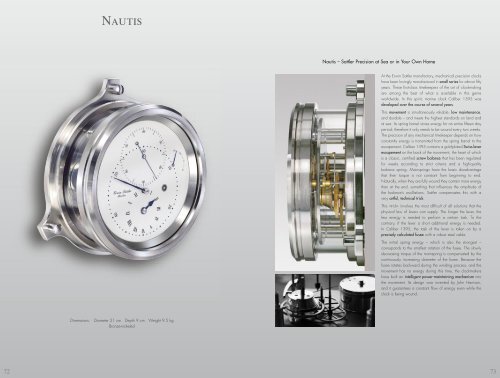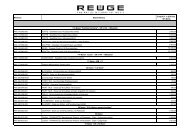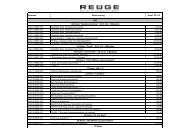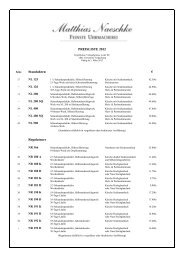TRADITION · PRECISION · PERFECTION - Erwin Sattler
TRADITION · PRECISION · PERFECTION - Erwin Sattler
TRADITION · PRECISION · PERFECTION - Erwin Sattler
Create successful ePaper yourself
Turn your PDF publications into a flip-book with our unique Google optimized e-Paper software.
Nautis<br />
Dimensions: Diameter 21 cm Depth 9 cm Weight 9.5 kg<br />
Bronze-nickeled<br />
Nautis – <strong>Sattler</strong> Precision at Sea or in Your Own Home<br />
At the <strong>Erwin</strong> <strong>Sattler</strong> manufactory, mechanical precision clocks<br />
have been lovingly manufactured in small series for almost fifty<br />
years. These first-class timekeepers of the art of clockmaking<br />
are among the best of what is available in this genre<br />
worldwide. In this spirit, marine clock Caliber 1395 was<br />
developed over the course of several years.<br />
This movement is simultaneously reliable, low maintenance,<br />
and durable – and meets the highest standards on land and<br />
at sea. Its spring barrel stores energy for an entire fifteen day<br />
period; therefore it only needs to be wound every two weeks.<br />
The precision of any mechanical timekeeper depends on how<br />
constantly energy is transmitted from the spring barrel to the<br />
escapement. Caliber 1395 contains a gold-plated Swiss lever<br />
escapement on the back of the movement, the heart of which<br />
is a classic, certified screw balance that has been regulated<br />
for weeks according to strict criteria and a high-quality<br />
balance spring. Mainsprings have the basic disadvantage<br />
that their torque is not constant from beginning to end.<br />
Naturally, when they are fully wound they contain more energy<br />
than at the end, something that influences the amplitude of<br />
the balance’s oscillations. <strong>Sattler</strong> compensates this with a<br />
very artful, technical trick.<br />
This »trick« involves the most difficult of all solutions that the<br />
physical law of levers can supply. The longer the lever, the<br />
less energy is needed to perform a certain task. To the<br />
contrary, if the lever is short additional energy is needed.<br />
In Caliber 1395, the task of the lever is taken on by a<br />
precisely calculated fusee with a robust steel cable.<br />
The initial spring energy – which is also the strongest –<br />
corresponds to the smallest rotation of the fusee. The slowly<br />
decreasing torque of the mainspring is compensated by the<br />
continuously increasing diameter of the fusee. Because the<br />
fusee rotates backward during the winding process, and the<br />
movement has no energy during this time, the clockmakers<br />
have built an intelligent power-maintaining mechanism into<br />
the movement. Its design was invented by John Harrison,<br />
and it guarantees a constant flow of energy even while the<br />
clock is being wound.<br />
72 73






